Lillet Blanc has been around for a long time already, but it took a while until it made its way on the summer bar menus. It's a sweet and aromatic aperitif wine from France and is a delight when sipped neat or on the rocks, but it also works sublimely in cocktails. It tastes like a crisp white wine, only sweeter with more fruity and floral flavors.
Here's why it became so popular and why you might want to drink more of it.
Lillet Blanc is an aromatized and fortified aperitif wine from France that is produced since 1986. It is the result of blending white wine with fruit infusions and botanicals before resting in oak barrels for twelve months.
The Blanc variant of Lillet is the legitimate successor of Kina Lillet, which existed between 1887 and 1986. Kina Lillet was more bitter in taste because it had a higher quinine content. Quinine is a component of the bark of the kina-kina or cinchona tree. Hence the name Kina Lillet.
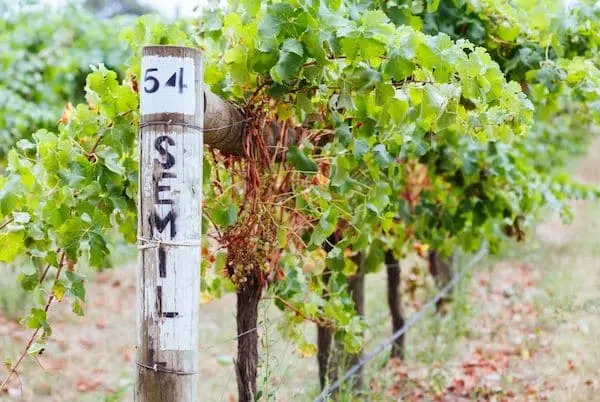
In 1985, Lillet revised the recipe to make the liqueur even better. Not only is the quinine content lower but also the sweetness. Its less bitter and better-balanced taste made the liqueur more approachable to the masses and is the main reason for the success of Lillet Blanc in summery Spritz cocktails.
The flavor profile of Lillet Blanc is light and well-balanced. It tastes similar to white wine with subtle floral flavors, hints of honey, and citrus fruits like orange and lemons. It's light and super refreshing, which makes it an ideal ingredient in fresh and floral cocktails.
You still get a subtle yet distinct bitter note on the palate from cinchona bark. However, it vanishes quickly and makes room for more fruity and spicy notes.
The scent is light and bright with subtle honey sweetness and a slightly floral and citrusy smell. You can smell fresh Jasmine flowers, honey, lemon rind, fresh orange, and minty herbal notes.
If you're looking for a substitute, Cocchi Americano works excellently as an alternative in cocktails. It has a slightly sweeter flavor profile which you can balance with aromatic bitters or citrus juices.
Lillet is made of 85% wine from the Bordeaux region, 15% macerated liqueurs, as well as herbs and spices. That template applies to Lillet Blanc but also to the other two expressions: Lillet Rouge and Rosé. The base wine for Lillet Blanc is made of Sauvignon Blanc and Sémillon grapes.
These liqueurs are usually citrus-based, made of orange peels from Morocco and Spain. The resulting aperitif wine is slightly stronger than your usual white wine, with 17% alcohol by volume.
Currently, Lillet offers three different versions on the market: Blanc, Rouge, and Rosé, with Lillet Blanc being the bestseller and best-known.
Lillet Blanc makes for an excellent low-alcohol aperitif, either on the rocks served with a slice of fresh orange or with a mixer like bitter lemon soda or in combination with fresh grapefruit juice and soda water. When served on its own the ideal drinking temperature is between 6°C and 8°C (43–46 °F).
Its refreshing taste is also ideal for a variety of low-ABV summer drinks. You can pair it with fresh lime juice and ginger in a Lillet Buck or in combination with peach ice tea, lemon juice, soda water, and mint in a Lillet Peach cocktail.
The fresh and floral taste combined with a low amount of alcohol makes it great in light cocktails. The most popular cocktails made with it are the Vesper Martini and The Corpse Reviver No 2.
The Vesper Martini is a drink known from film and tv, invented by Bond author Ian Fleming. It consists of vodka, gin, and Lillet Blanc. This twist on the classic Martini can is amazingly rich and full-bodied.
In Corpse Reviver No.2, you mix Lillet Blanc with lemon, gin, orange, and absinthe. The result is a cracking and citrusy hangover remedy. Other popular cocktails made with Lillet Blanc include:
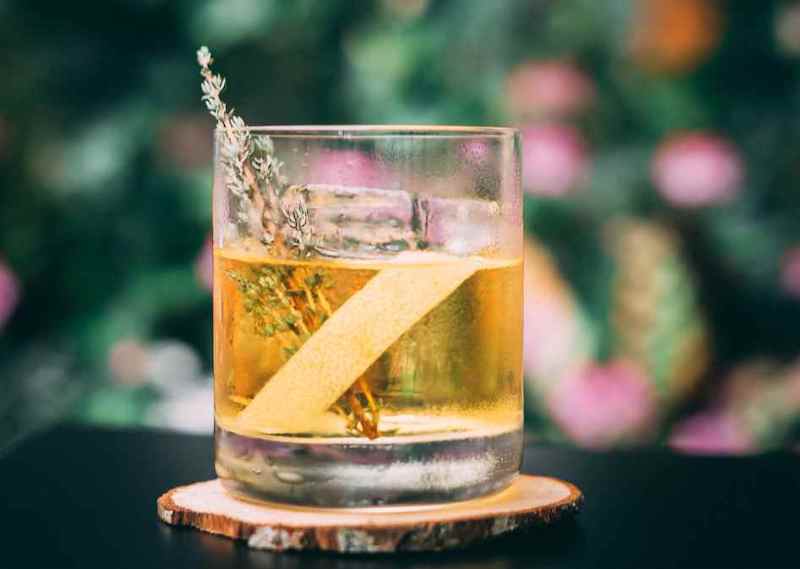
Kina Lillet was the original form of Lillet, first produced in 1887. Due to the higher quinine content, Kina was way more bitter but also sweeter than modern days Blanc version. Today, Lillet offers three types: Lillet Rouge, Lillet Rosé, and Lillet Blanc.
The two brothers, Raymond and Paul Lillet, established the Lillet brand in 1872. They got the idea to make a white aperitif wine from a doctor who traveled to Brazil for Louis XIV, where he came across the bitter-flavored quinine that is contained in the bark of the cinchona tree.
On returning to Bordeaux years later, he started making liqueurs from the bark of the cinchona tree. These so-called tonic wines became quite popular as people soon declared them to be the most healthy and hygienic beverage to drink at the time. -And that probably wasn't far from the truth, considering we're talking about the time of smallpox, typhus, and pestilence.
In 1872, the Lillet brothers founded their company La Maison Lillet in the small village of Podensac near Bordeaux. Merely 15 years later, they started producing a fortified and aromatized wine naming it Kina Lillet.
At this time, aperitif wines were typically red, so their white-wine-based Lillet stood out from the competition. As you might have guessed from the name, Kina Lillet not only contained the popular ingredient quinine but it was also named after it.
Lillet soon became famous beyond the French borders. In the roaring Twenties, Paul and Raymond exported their product to other European countries, Africa, and the US, where it quickly became a success with New York's high society.


In the 1970s, the grandson of the Lillet brothers removed the Kina and rebranded the product to Lillet only. Kina had become a generic term for beverages containing quinine and seemed superfluous.
Only a decade later, the company changed the original formula for Lillet to improve its taste and quality. Both, quinine and sugar levels, were reduced a lot. That is also why vintage cocktail recipes asking for Kina Lillet often need adjustments if you use the modern Blanc version of Lillet.
They added Blanc to the brand name to capitalize on the fact that most products on the market were still red aperitifs. To serve people who prefer red over white, they released Lillet Rouge in 1962. In 2011, they followed it up with Lillet Rose.
The blend of sweetness, citrus, slight bitterness, and floral-herbal notes make Lillet Blanc extremely versatile. Yet, you can make it even more flavorsome by infusing it with aromatic ingredients like rosemary, thyme, basil, or chamomile.
By infusing the aperitif wine with additional herbs aromas and flavors are even more pronounced. Perfect for mixing flavorful cocktail creations. It's a great way to bring stronger flavors into your Lillet cocktails without relying on other ingredients.
The Amaretto Sour Cocktail is sweet, yet not overly sweet, and maintains the sophisticated air of a classic Sour. It also is one of the most celebrated drinks based on Amaretto, the almond-flavored liqueur from Italy. The distinctive taste makes it a brilliant and unique sip.
Quick Facts Amaretto Sour Cocktail
The recipe follows the general approach of all sour cocktails but calls for a split base for better balance.

Looking at the list of ingredients of the Amaretto Sour recipe, it is pretty straightforward. Yet, the split base (Amaretto and Bourbon) makes it a little more complex than your standard recipe:
For the perfect version of this drink, you have to perform a dry shake. That technique makes it easier for the egg white to emulsify, resulting in a thicker and stronger foam.
That means, you add all ingredients into your shaker and shake without ice for about 20 seconds. Only then do you add ice cubes and shake for another 15 seconds to chill everything properly. -Because you shake shorter with ice than you usually would, consider cooling all elements in the fridge beforehand.
If you are not quite happy with how your drink turned out, perform a reverse dry shake for an even thicker foam.
Further, stick to the approach of the split base to avoid getting an unbalanced drink. But let me explain in more detail.
Traditional Sour drinks are based on spirits. Using Amaretto makes things different. It is a liqueur and, as such, has a lower ABV and tastes a lot sweeter.
If you use the same ratio for an Amaretto Sour recipe as you do for, let's say, a Whiskey Sour, your result will definitely turn out way too sweet. Thus, you need a dry, high-proof spirit to balance the sugar and add a bit of bite.
You could also use rum to balance the almond liqueur, but Bourbon is the most common and also our preferred way to make this drink. The person who came up with this idea was Jeffrey Morgenthaler, by the way.
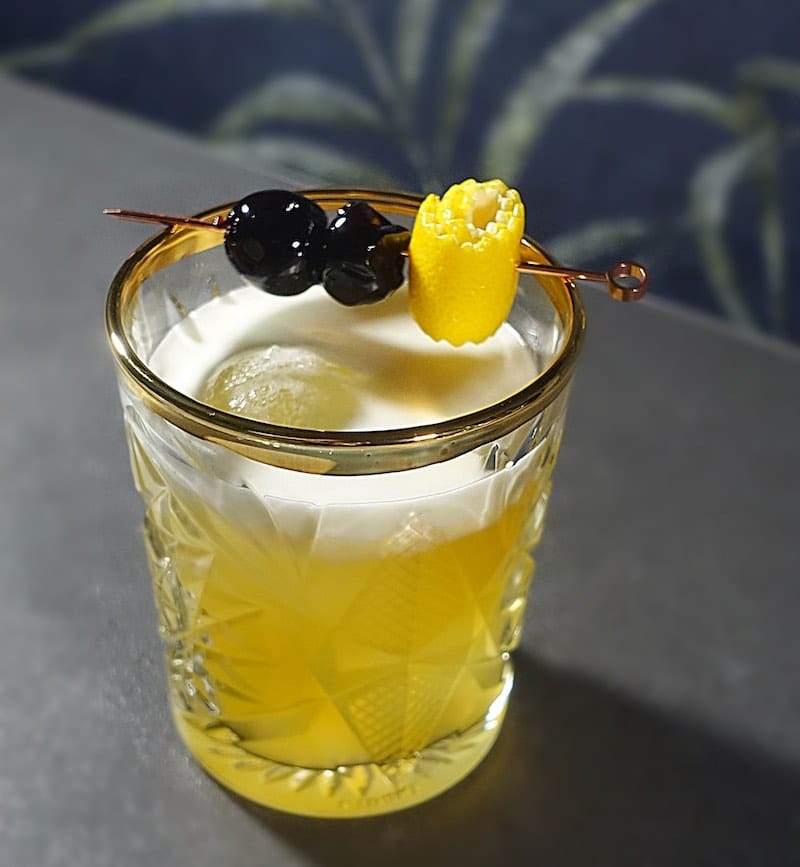
One of the most popular variations of the Amaretto Sour recipe is applying the formula of a Stone Sour. By adding orange juice, the cocktail gets a rich and even fruitier.
If you like the idea of oranges but don't want to bring another juice to the recipe, replace the simple syrup with homemade orange syrup. That will also bring some extra flavor but also sweetness. Definitely not our favorite variation of this recipe, but palates are different...
If you now have an open bottle of Amaretto at home and wonder what you can do with it apart from making Amaretto Sour Cocktails, try one of the following:
For a better overview, check out the 9 best Disaronno Cocktails. Also, for more inspiration, check out our favorite Sour Cocktails.
You're trying a new cocktail recipe, and it asks for a dash of bitters? So what exactly does it mean? A drop, ten drops, 5ml? The short and precise answer is that one dash of bitters equals 1/32 oz or 0.92 ml.
There's also a longer and more practical answer to this question which I'll discuss in more detail in this article. As you might imagine, measuring 0.92ml is almost impossible. At least in a bar or home bar environment. But why are bitters served in dashes?
The measurement dash is used for potent or highly concentrated ingredients like bitters and Absinthe, added to a drink before shaking or stirring. The purpose of said ingredients is to enhance or complement the flavors of a cocktail and impart a deeper flavor profile to your drink.
Countless classic and contemporary cocktail recipes ask for a dash of bitters. -For the record, cocktail bitters do make a difference, e.g., a couple of dashes of Angostura bitters in a Whiskey Sour or an Old Fashioned. Still, when it comes to measuring a dash, confusion arises.
The term dash has been appearing in cocktail books for ages; It's as old as mixology itself. At the same time, it is one of the least precise measurements in bartending.
Still wondering "How much is a dash of bitters exactly?" Let's find out.
A dash is more or less the bartending equivalent of what a pinch is in cooking. A dash of bitters is seasoning your drink like salt is seasoning your Wagyu filet.
If you think about it like that, you can understand why the term is somewhat vague. Above all, it is a matter of taste if you use more or less seasoning or bitters. But since that's not a satisfying answer, let's take a closer look.
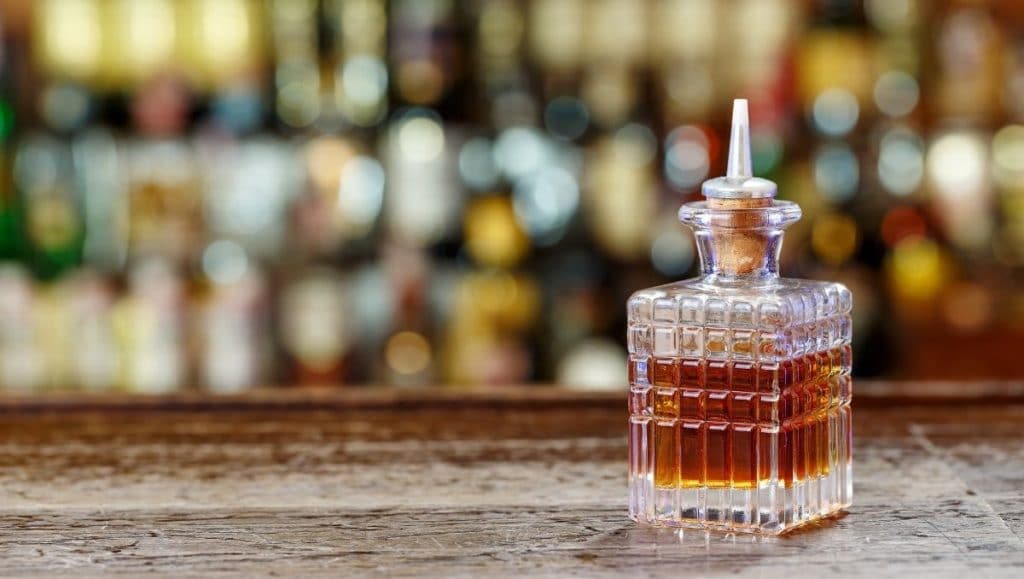
To explain the term dash further, you must know that bitters and other things usually dosed in dashes are stored in so-called dasher bottles.
Those bottles only release a wee bit of the liquid they contain at once.
But the mystery isn't solved with the dasher bottles alone. When you turn the bottle upside down and perform a hard and quick shake, the dasher bottle will release one dash. Here's a short video that shows what a dash looks like.
A dash is a minuscule quantity of liquid you cannot measure with standard measuring tools like jiggers or a bar spoon. But for all you number enthusiasts preferring an exact amount, here's our guide to measuring a dash.
| Dashes of Bitters | Milliliters (ml) | Fluid Ounces (oz) | Teaspoons (tsp) | Drops |
|---|---|---|---|---|
| 1 Dash | 0.92 ml | 1/32 oz | 1/8 tsp | 10 drops |
| 2 Dashes | 1.84 ml | 1/16 oz | 1/4 tsp | 20 drops |
| 3 Dashes | 2.76 ml | 3/32 oz | 3/8 tsp | 30 drops |
1 dash of bitters = 0.92ml or 1/32 oz (equals 1/8 of a teaspoon).
If you want to measure this more precisely than dashing the bitters in one thrust, you can use drops. - 1 dash of bitters equals 10 drops.
If your recipe asks for two dashes of bitters? Well, the same math applies. 2 dashes of bitters equal 1.84ml or 1/16 of a fluid ounce (equals 1/4 of a teaspoon).
Measuring in drops, 2 dashes of bitters equal 20 drops.
The logic from above applies to all measurements, also for 3 dashes. 3 Dashes of bitters equal 2.76ml or 3/32 oz (equals 3/8 of a teaspoon).
Measuring the amount in drops is the easiest way to get precise amounts. For 3 dashes, the number of drops you need is 30.
Bitters are basically a flavorful alcoholic beverage that enhances cocktails with its intense bittersweet and aromatic taste. To make bitters, strong, neutral alcohol is infused with various aromatic ingredients like spices, bark, roots, cinnamon, citrus, fruit, and herbs. They bring depth and complexity to your favorite drinks, making them a key ingredient in many cocktail recipes.
There are many different types of bitters such as aromatic bitters (Angostura and Peychaud's bitters), orange bitters, coriander, cardamom bitters, and many more.
Even if you know the numbers now, you cannot measure them. So standardizing the dash is tough.
That, in turn, leads to slight differences in taste when different people make the same drink. But that is not necessarily a bad thing. Think of it as a part of your unique way of making drinks.
How you hold the bottle, the angle of the bottle and the exact amount of your dash is most likely different from others. Yet, as standard tools don't work for measuring a dash, there are some little helpers:

For cooking, there are those tiny measuring spoons that should help to measure a dash. But measuring with them is hard as the liquid from the bitter bottles is not so easy to control. At least if all of the bitters should end up on that tiny spoon.
If you still feel unsure and don't have enough experience, you might search for a better way to measure your dash anyway. And I can understand that.
The plastic dasher tops of the bitter bottles you can buy are usually more in the direction of not-so-precise. Luckily, there is a solution to that.
Some of the world's top bars also noticed the dash gate and started acting on it. Many of them use only special dasher bottles, mostly Japanese ones.

These elegant little bottles are a lot more precise. Death & Co bar in New York experimented with them and found that one dash of a dasher top bottle equals three from a Japanese dasher bottle.
My advice is if you're feeling unsure, get one of these dasher bottles. The dashes will be more precise and consistent. And consistency is an advantage when you're new to mixology and want to learn how everything works together.
Even if you are a perfectionist, don't worry too much about the difference taste-wise. Despite everything, a dash is a small amount. And, as long as you only use a small amount, you won't ruin your cocktail.
Making cocktails is like any other craft you learn. It takes time and practice. If a recipe asks for a dash, you can use a Japanese dasher bottle and taste your drink. Then add another one and try again. By experimenting, you will find the right way to apply your dash measurement.
The alcohol content of bitters varies but is often between 35% ABV and 45% ABV. However, as you only use a very small amount of these bitters, the absolute amount of alcohol is negligible.
There are countless cocktails to make with bitters. Here's some inspiration for classic drinks that contain bitters - from a few droppers to a couple of dashes.
The last one on this list is traditionally made without bitters, but a Dry Martini tastes better with the rich bitters.
The dash is an imprecise measuring unit and nothing you can measure with a jigger or any other bar tool. Getting it 100% right requires some practice and experience.
But even if your measurement is slightly off, it won't affect the quality of the result in a significant way. Yet, if you want to ensure precise measurements, use the tools and tips mentioned above.
The thing is, not all shot glasses are the same size. The size of a shot varies remarkably depending on where in the world you order it. Even inside the US, you may get shots of different sizes.
As there is no law, the ounces in a shot range between 1 to 1.5 ounces. In most cases, ordering a shot will get you a "jigger shot" - this measurement is clearly defined and conforms to exactly 1.5 ounces.
In other parts of the world, shot sizes range anywhere from 0.67 ounces in Germany up to slightly more than 2 ounces in Japan.
Jump to Ounces in a Shot | Ounces in Double Shot | Measuring with a Shot Glass | ML in a Shot | Shot Size by Country | FAQs
The exact number of ounces in a shot depends on the size of your shot glass. They range from 1 to 2 ounces, but most shot glasses hold between 1.25 and 1.5 ounces. The most common size of a shot in the US is 1.5 ounces.
For the rest of the world, the numbers are different. In Germany, a single shot will get you 0.67 ounces, in Australia 1 ounce, and in Japan, you will get more than 2 ounces.
Here's a table that compares the number of ounces per shot around the world.
| Country | Shot size in ounces | Shot size in ml |
| Germany | 0.67 oz | 20 ml |
| Channel Islands, South Africa | 0.84 oz | 25 ml |
| France, UK | 0.84 or 1.18 oz | 25 or 35 ml |
| Isle of Man | 0.96 oz | 28.4 ml |
| Australia, India | 1.01 oz | 30 ml |
| Serbia | 1.01 - 1.69 oz | 30 - 50 ml |
| Netherlands | 1.18 oz | 35 ml |
| Ireland | 1.2 oz | 35.5 ml |
| Denmark, Estonia, Sweden, Finland, Norway | 1.35 oz | 40 ml |
| Hungary, Slovakia | 1.35 or 1.69 oz | 40 or 50 ml |
| Italy | 1.35 - 2.02 oz | 40 or 60 ml |
| USA, Canada | 1.5 oz | 44 ml |
| Greece | 1.52 oz | 45 ml |
| Albania, Bulgaria, Korea, Poland, Romania, Russia, Slovenia | 1.69 oz | 50 ml |
| Israel | 1.69 or 2.02 oz | 50 ml or 60 ml |
| Japan | 2.02 oz | 60 ml |
In general, a double shot contains exactly 3 ounces of liquor. That's because double shots are typically asked for in cocktails and refer to jigger shots.
Some dodgy bars sell double shots with 2 ounces, explaining that this is double of one ounce.
Taking measurements of cocktail ingredients with a shot glass can be problematic and you should only use glasses you know. If you know that your glass holds 1 or 1.5 ounces, it can be a great tool. If you don't know, it can ruin your drink.
It is a common misconception that all shot glasses are standardized to hold 1 oz of liquid. In fact, similar to a dash or a dram, they are not officially standardized. Shot glasses usually have a volume between 1 and 2 liquid ounces.
Thus, there's a good chance your shot glass holds something around 2 oz, so doubling the amount you were perhaps expecting. To make it short: you shouldn't measure your intake in shot glasses.
Also note: If you're about to make a cocktail and your recipe asks for a shot, it usually refers to a jigger shot. A jigger shot means 1.5 oz of liquor.
And by the way, if you don't have a jigger at home, I suggest getting one. It's an absolutely essential tool for your home bar.
To answer this, you need to convert oz into ml. 1 oz is approximately 30ml. So 1.5 oz of liquor is about 45ml (to be precise, it's 44ml, but 45ml is easier to memorize), and 2 oz equals 60ml. Here's a tool that helps converting these amounts.
The same goes for cl: 1 cl is 10ml, so 1 oz equals 3 cl, 1.5 oz equals 4.5cl, and 2 oz equals 6cl. Once you know that, converting amounts from oz to ml or cl becomes pretty straightforward.
The shot sizes vary a lot depending on where you order it. Every country in the world seems to have its own shot size standards. You don't have to travel far to notice that a shot isn't always what you expect it to be. Check out the graphic below to see how many ounces you get per shot around the world.
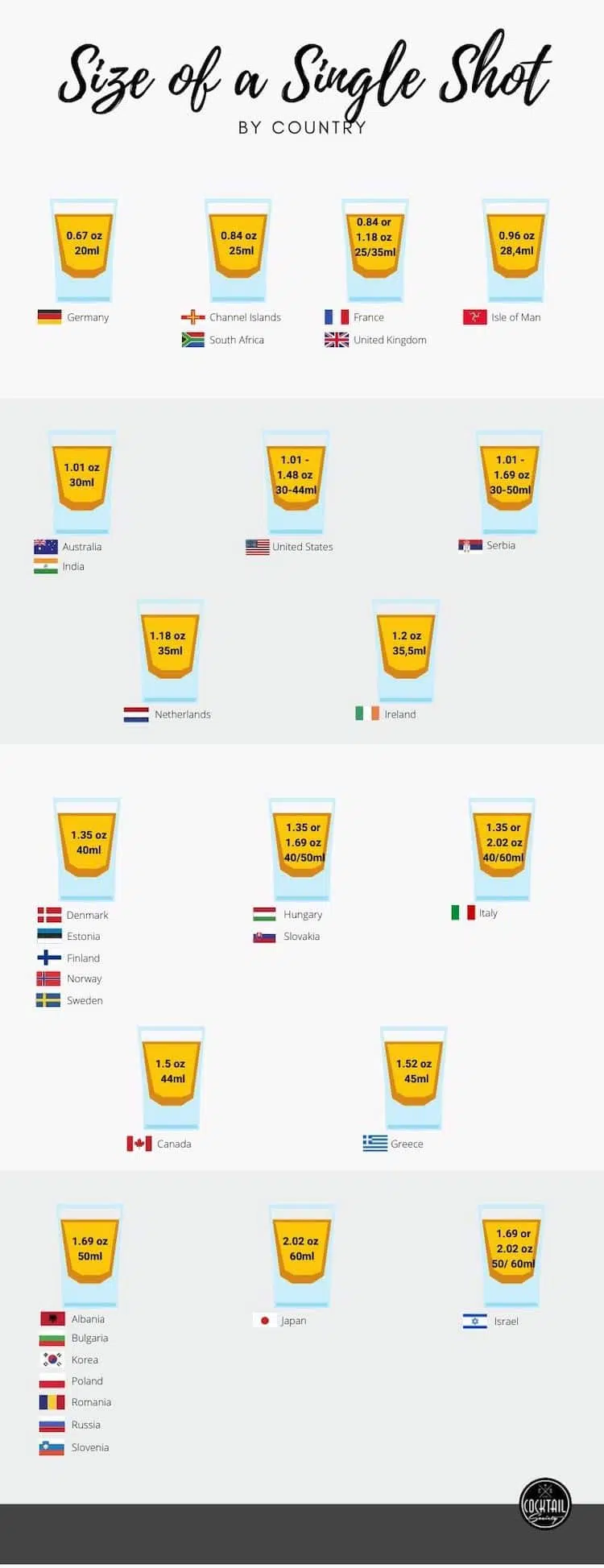
Before mixology became my passion, I assumed a shot would be a fixed international standard and didn't consider the possibility that it could be different in other places. Maybe you did, too?
So, the next time you have a shot at a new place, you know what you will get. -At least at the first one. After the fourth, things get blurry anyway.
Syrups are used as a sweetener in countless cocktail recipes. That makes them an essential ingredient you should have at home.
Often it is adequate to stick to standard sugar syrup, also called simple syrup. But other times, you can also consider adding some extra flavor.
This Banana syrup is a great way to bring sweetness to your cocktail and add the rich taste of ripe fruits.
However, getting the pure banana flavor isn't an easy thing to achieve. The basic techniques to create a fruity syrup, for instance, an infusion of simple syrup or boiling a syrup, won't lead to a decent result.
I don't recommend using a store-bought banana syrup from the supermarket. The flavors in those bottled syrups are far from the natural banana taste. In fact, they taste more like packed banana candy. Plus they're also quite expensive.
So I prefer to make my own banana simple syrup that I can use in various cocktail recipes.
A regular simple syrup is made of one part sugar and one part water. Both ingredients are added to a saucepan, boiled, and then cooled down.
When making banana simple syrup, things are a bit different. As the banana itself already contains water, we need a different approach. Consequently, the recipe doesn't ask for equal parts of sugar and water but needs more sugar.
Further, there's a special technique to extract as much banana flavor as possible. So let me explain how to get that beautiful ripe banana taste:
You want to infuse as much banana flavor into our syrup as possible. For that, you need ripe bananas (with brown spots) as they are more flavorful. That and the technique of macerating the bananas will create an intense banana taste. It is just perfect for use in flavorful cocktail recipes.
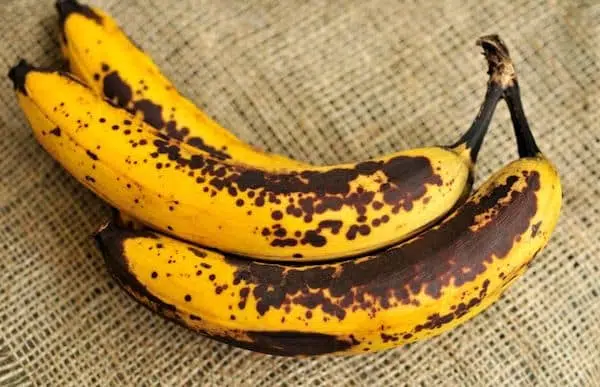
To achieve this, you need to cover your bananas in sugar. That will extract the flavor and moisture of the fruits and concentrate their flavor. This process is called maceration.
When preparing food, maceration means breaking something into pieces with the help of liquid. The standard process would be to soak dehydrated or preserved fruit (or vegetable) to soften it and release as much flavor as possible.
For fresh fruit, the process is a bit different. Here we use sugar sprinkled on the fruit and let it sit. That allows releasing the juices and makes the result more flavorful.
Once the banana is macerated, combine it with water and a pinch of salt and put it on the stove. The heat of the oven will help to liquefy the sugar.
Then, when the sugar is fully dissolved, take the saucepan off the stove and let it sit overnight.
The sweet and tropical taste of ripe bananas works exceptionally well with Tiki cocktails. That's why most recipes that use banana simple syrup are rum-based drinks.
A beautifully spiced rum, lime juice, and this delicious banana syrup are enough to create an extraordinary and wonderful cocktail.
Using thicker and richer types of syrup will sweeten your cocktail and alter its texture. It creates a richer mouthfeel that makes your drink even more pleasant.
A great example of such a syrup is Demerara syrup. But you can also achieve this effect with our Banana syrup.
The trick is to use cane sugar in the recipe instead of regular white sugar because it is less refined. Additionally, it also carries these notes of caramel that work great with the strong banana taste.
